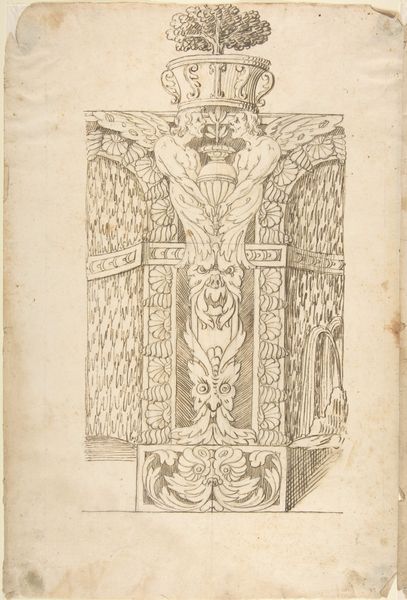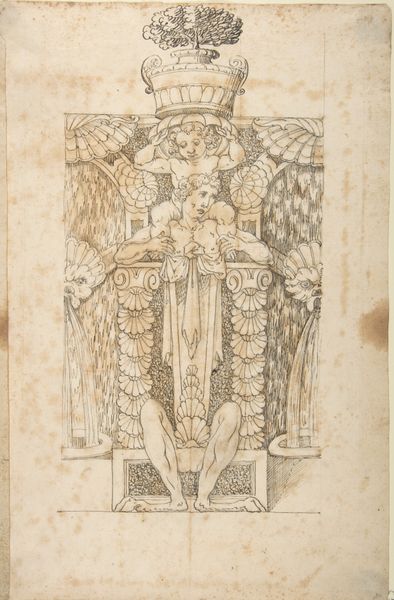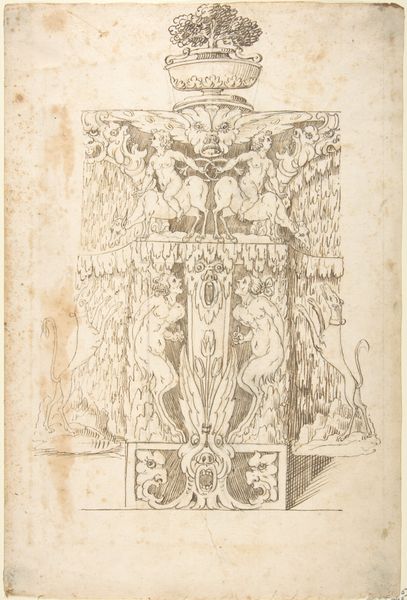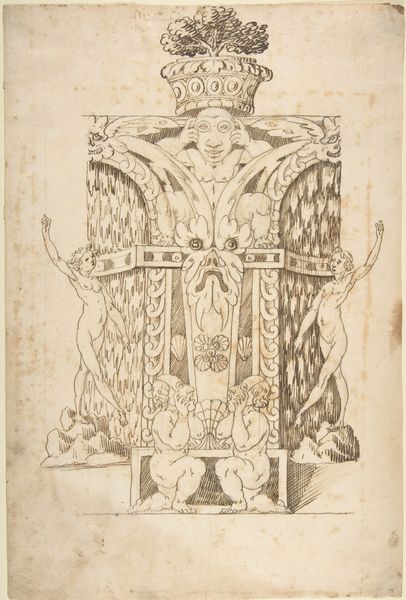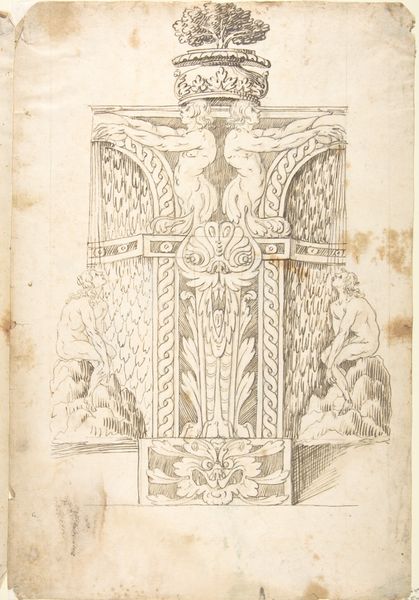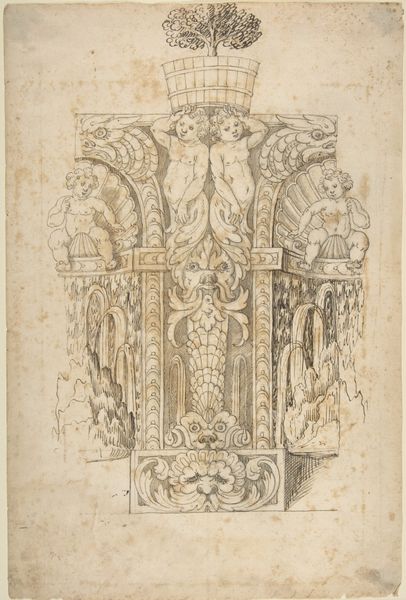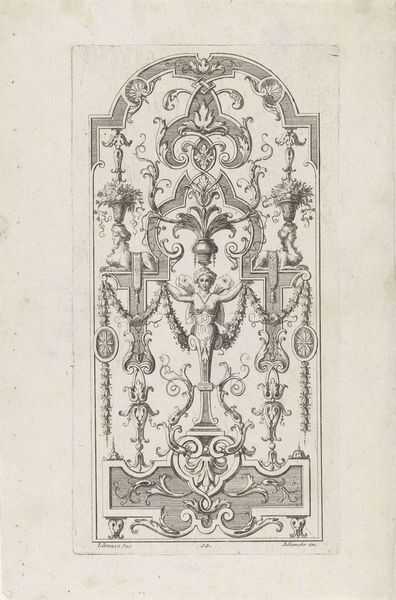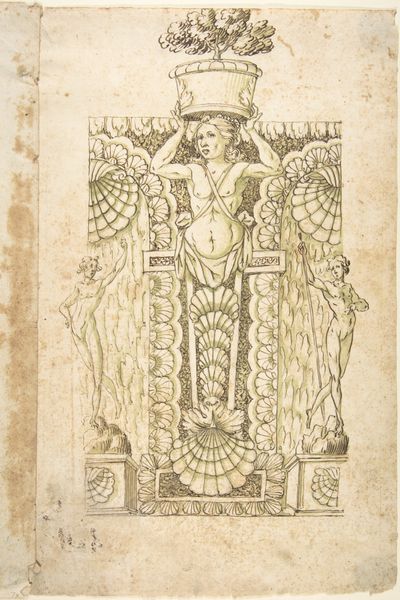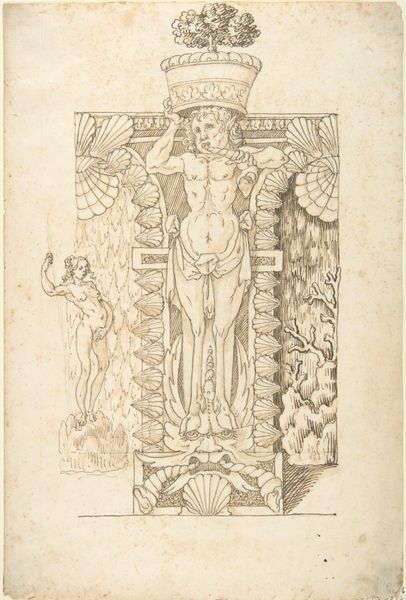
Dimensions: 14 3/4 x 9 13/16 in. (37.4 x 25 cm)
Copyright: Public Domain
Curator: Let's discuss this "Design for a Wall Fountain" from somewhere between 1550 and 1620, housed at the Metropolitan Museum of Art. It's attributed to an anonymous artist. An etching, so think of the process involving metal plates, acid, and ink. Editor: My first thought is...ornate. But strangely powerful, with the symmetry and those figures straining under a heavy load. There's a strong vertical thrust softened by the cascading, watery details. Curator: Exactly! Consider the labor and the context of printmaking then. This wasn't necessarily "high art" in the way we think today. Etchings served a functional purpose – designs circulated among artisans to inspire and instruct. A pattern for production. Editor: The imagery, though, elevates it. Those flanking female figures clearly reference classical caryatids – symbols of strength and burden. The dolphins represent the element of water and the creatures above perhaps are there to hold it. It really draws you into a narrative about man’s control and celebration of nature. Curator: Note the careful delineation of texture and the contrast. Etching allowed for relatively easy reproduction but also for detail, the crosshatching building up the form. Think about the engraver’s hand, pressing, and wiping, iterating. What choices, whose tastes are reflected in this piece? The market demand, no doubt! Editor: True. It could also reflect power and opulence for the future commissioner! Dogs flank the fountain below. In the middle they may symbolize loyalty. They stand opposite to the vessel and creatures at the top, but perhaps together the imagery indicates transformation or an offering. Curator: Perhaps for domestic fountains of wealthy families who sought to project their connection with history! The level of embellishment points toward an aristocratic consumer rather than the everyday workshop, doesn't it? This shows the value in considering both craft and class dynamics. Editor: Absolutely. Considering both material reality and iconography truly brings the spirit of the Renaissance to life. A window into design process and its potential intended social display of symbols and visual traditions, combined.
Comments
No comments
Be the first to comment and join the conversation on the ultimate creative platform.
